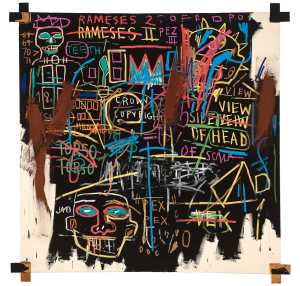Specifications
| Title | Le visage de la guerre |
|---|---|
| Material and technique | Oil on canvas |
| Object type |
Painting
> Painting
> Two-dimensional object
> Art object
|
| Location | This object is in storage |
| Dimensions |
Width 79 cm Height 64 cm |
|---|---|
| Artists |
Artist:
Salvador Dalí
|
| Accession number | 2766 (MK) |
| Credits | Purchased with funds from the estate of G.J. Verijssel, 1971 |
| Department | Modern Art |
| Acquisition date | 1971 |
| Creation date | in 1940 |
| Entitled parties | © Salvador Dalí, Fundación Gala-Salvador Dalí, c/o Pictoright Amsterdam 2022 |
| Provenance | André Cauvin, Braine l’Alleud 1940-71 |
| Exhibitions | New York/Chicago/Los Angeles 1941; New York 1943; New York 1945b; Chicago 1949; Santa Barbara 1953; Rome 1954; Knokke Le Zoute 1956; Bordeaux 1957; Ghent 1964; Humlebaek/Brussels 1967; Charleroi 1968; Rotterdam 1968; Rotterdam 1970-71; Humlebaek 1973; Barcelona/Madrid 1983; Kobe 1987; Paris 1996-97; Madrid 1999-2000; Barcelona/Madrid/St Petersburg 2004-05; Rotterdam 2005a; Milan 2010-11; Paris/Madrid 2012-13; Madrid 2013; Rotterdam 2013-14a; Rotterdam 2017b |
| Internal exhibitions |
Een prikkelcollectie (2000) Een paraplu, een naaimachine en een ontleedtafel. Surrealisme à la Dalí in Rotterdam. (2013) De collectie als tijdmachine (2017) Collectie - surrealisme (2017) |
| External exhibitions |
Dalí (2012) Dalí - All of the poetic suggestions and all of the plastic possibilities (2013) Dalì & Magritte (2019) Dalí, Magritte, Man Ray and Surrealism. Highlights from Museum Boijmans Van Beuningen (2023) Surrealist Art - Masterpieces from Museum Boijmans Van Beuningen (2021) A Surreal Shock – Masterpieces from Museum Boijmans Van Beuningen (2021) Only the Marvelous is Beautiful (2022) A Surreal Shock. Masterpieces from Museum Boijmans Van Beuningen (2023) Dal nulla al sogno (2018) |
| Research |
Show research A dream collection - Surrealism in Museum Boijmans Van Beuningen |
| Literature | Dalí 1942, p. XIV; Rotterdam 1970, cat. no. 70; Ades 1982, p. 113; Descharnes/Néret 1994, p. 336; Radford 1997, pp. 212-15, fig. 137; Descharnes 1997, p. 253; Barcelona/Madrid/St Petersburg 2004-05, fig. 108, p. 101; Figueres 2004-present, cat. no. 499; Rotterdam/Barcelona/Madrid 2005, p. 151; Milan 2010-11, pp. 90-91; Paris/Madrid 2012-13, pp. 244-45 |
| Material | |
| Object | |
| Geographical origin | Spain > Southern Europe > Europe |























